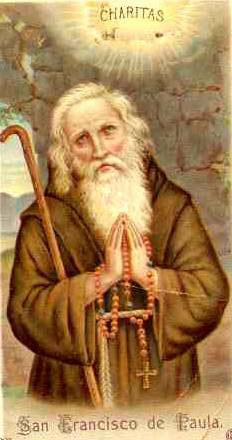Ancient See of Ribe in Denmark (Jutland)
FREE Catholic Classes
(RIPAE, RIPENSIS.)
The diocese (29 deaneries, 278 parishes ) consisted of the modern Danish Provinces of Ribe, Vejle, and Ringkjöbing, and of part of North Schleswig. The first church built at Ribe was founded by St. Ansgar in 860, served by his biographer and successor, St. Rembert, and destroyed during the heathen reaction after the latter's death in 888. It was rebuilt towards 948, in which year St. Leofdag. first Bishop of Ribe, was consecrated by Archbishop Adaldag of Hamburg, probably at the Council of Ingelheim (Germany), which the Jutish bishops attended. Leofdag is said to have been martyred by the heathen at Ribe. Until the death of his third known successor Vale (1044-59) the bishops of Ribe, Schleswig, and Aarhus wandered about Jutland on missionary tours. In 1060, however, Jutland was divided into the four Dioceses of Ribe, Aarhus, Viborg, and Vestervig (Borglum). Bishop Thure (1125-34) began to build the fine Cathedral of Our Lady at Ribe, which was finished under Bishop Elias (1142-66), who founded the chapter in 1145. His successor Radulf (1170-71), an Englishman and chancellor to King Valdemar I, translated to the cathedral the relics of St. Leofdag, who, however, was never formally canonized. He began the foundation of the Cistercian Abbey of Logum (Locus Dei) in North Schleswig, which was completed by his successor Stephen (1173-77), formerly Abbot of Herrisvad (Scania). Bishop Omer (1178-1204) reduced the number of the canons of Ribe to twelve. Bishop Christian II (1288-1313) in 1298 greatly enriched the cathedral school, which had been founded in 1145. Bishops Eskil (1388-1409) and Henry Stangberg (1455-65) published synodal statutes with a view to reforming both clergy and laity. Ivar Munk was elected bishop in 1499 but not consecrated till 1513. Although he was unable to prevent Duke Christian from protestantizing North Schleswig, he kept the new doctrine out of the rest of his diocese. Ivar Munk opposed Christian's election as King Christian III of Denmark in 1533, being however compelled as a privy councillor for Jutland to join that monarch's party, Ivar Munk resigned his bishopric in 1534 in favour of his nephew, Olaf Munk. The bishop's palace at Ribe was bestowed upon Ivar Munk and there he died in 1539. Like the other Danish bishops Olaf Munk was imprisoned on 12 August, 1536. When released he had to promise to marry as well as to comply with the conditions imposed upon all the Danish bishops. On the fulfillment of his promise the Abbey of Tvis was bestowed upon him, he was later readmitted to the privy council, and he lived the life of a rich nobleman until his death in 1569.
The cathedral of Ribe (restored in 1904), a Romanesque building with Gothic additions and a tower dating from 1440, contained besides the shrine of St. Leofdag a chapel dedicated to St. Lambert, which was a great centre for pilgrimages. St. Lambert was the patron of Ribe as well as of Liège in Belgium, and his cultus at Ribe is doubtless due to the trading connection between that city and the Low Countries. The abbey church of Logum, the Romanesque churches near Ribe, like the cathedral built of volcanic stone brought from Andernach on the Rhine, and the earliest Christian monument in Denmark, the great carved stone set up by King Harold Bluetooth near the funeral mounds of his parents, King Gorm the Old (d. 940) and Queen Thyra Danebod (d. 945) at Jellinge near Veile, are all memorials of the Catholic past of the Diocese of Ribe. The cathedral chapter consisted of four prelates and twenty-one prebendaries (twelve resident). There were eight minor canons and nearly fifty chaplains. In the city there were also the Benedictine Convent of St. Nicholas (founded before 1215), a Franciscan and a Dominican priory, each dating from 1259, and a hospital of the Holy Spirit, and a commandery of the Knights of St. John of Jerusalem, both dating from about 1300. Elsewhere there were the Cistercian Abbeys of Tvis, near Holstebro (founded by Prince Buris in 1163), of Logum, and of Seem, the last having been a Benedictine abbey till 1171. There were Benedictine convents at Gudum and at Stubber, a Dominican priory at Veile, and a Franciscan priory at Kolding. At present (1912) there are Catholic churches, schools, and hospitals at Esbjerg, Kolding, Fredericia, and Veile.
Join the Movement
When you sign up below, you don't just join an email list - you're joining an entire movement for Free world class Catholic education.

-

- Stations of the Cross
- Easter / Lent
- 5 Lenten Prayers
- Ash Wednesday
- Living Lent
- 7 Morning Prayers
- Mysteries of the Rosary
- Litany of the Bl. Virgin Mary
- Popular Saints
- Popular Prayers
- Female Saints
- Saint Feast Days by Month
- Pray the Rosary
Pope Francis’ April Prayer Intention: Using Technology to Strengthen Human Connections
Finding Peace Through Prayer in a World of Worry
Trump Administration Withholds Federal Grants from Planned Parenthood Over DEI and Civil Rights Concerns
Daily Catholic
 Daily Readings for Wednesday, April 02, 2025
Daily Readings for Wednesday, April 02, 2025 St. Francis of Paola: Saint of the Day for Wednesday, April 02, 2025
St. Francis of Paola: Saint of the Day for Wednesday, April 02, 2025 Prayer for God's Help in Daily Actions: Prayer of the Day for Friday, March 14, 2025
Prayer for God's Help in Daily Actions: Prayer of the Day for Friday, March 14, 2025 Daily Readings for Tuesday, April 01, 2025
Daily Readings for Tuesday, April 01, 2025 St. Hugh of Grenoble: Saint of the Day for Tuesday, April 01, 2025
St. Hugh of Grenoble: Saint of the Day for Tuesday, April 01, 2025- To Perceive Animals as God's Gifts: Prayer of the Day for Thursday, March 13, 2025
![]()
Copyright 2025 Catholic Online. All materials contained on this site, whether written, audible or visual are the exclusive property of Catholic Online and are protected under U.S. and International copyright laws, © Copyright 2025 Catholic Online. Any unauthorized use, without prior written consent of Catholic Online is strictly forbidden and prohibited.
Catholic Online is a Project of Your Catholic Voice Foundation, a Not-for-Profit Corporation. Your Catholic Voice Foundation has been granted a recognition of tax exemption under Section 501(c)(3) of the Internal Revenue Code. Federal Tax Identification Number: 81-0596847. Your gift is tax-deductible as allowed by law.


 Daily Readings for Wednesday, April 02, 2025
Daily Readings for Wednesday, April 02, 2025 St. Francis of Paola: Saint of the Day for Wednesday, April 02, 2025
St. Francis of Paola: Saint of the Day for Wednesday, April 02, 2025 Prayer for God's Help in Daily Actions: Prayer of the Day for Friday, March 14, 2025
Prayer for God's Help in Daily Actions: Prayer of the Day for Friday, March 14, 2025 St. Hugh of Grenoble: Saint of the Day for Tuesday, April 01, 2025
St. Hugh of Grenoble: Saint of the Day for Tuesday, April 01, 2025

